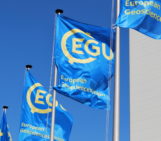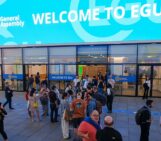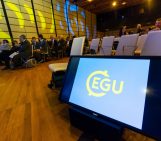
We find ourselves in an ever-changing world of new platforms and apps, and yet, communication can often still be difficult. And this is particularly true for a large organisation like EGU. Even when we consider just the Early Career Scientists (ECS) representatives of each division, this still includes more than 20 representatives and their teams. Add to this the fact that representatives are spread all across the globe. And time zones, oh, they are not necessarily (virtual) meeting friendly!
Finding the right platform
It’s true that modern tools and consistent guidelines can significantly help connect large groups. We used to do things the ‘old-fashioned’ way, using various channels like Skype (and its chat feature), Google Documents, and an online forum – which over time did not serve as efficient solutions. Realising the need for an overhaul, the ECS Connectivity Group was tasked with setting up a more modern platform. Among the many platforms available, we chose Slack as the right tool for the job. Soon after, the Group drafted guidelines to maximise its potential and created a dedicated workspace at the beginning of 2020. Since their implementation, these changes have considerably improved the ease of communication between ECS representatives, their teams, and the different Groups.
Another important building block for us is the communication within each Division, between its leadership structure, representatives, and members. Each EGU Division operates somewhat differently from the other and ensuring efficient communication within this varying framework is a complex (and ongoing) challenge. Our job is to attempt homogenisation without limiting the freedom of every Division. As an example, we recently received input to increase visibility of the Divisions’ leadership structure (among them the ECS representatives and their teams) on the Divisions’ websites by implementing a consistent blueprint for all – an effort which is currently in progress.
Connections within and beyond EGU
The communication between ECS representatives and within Divisions is only one part of the puzzle. Each Division uses different approaches to connect and communicate with its members and the broader scientific community, and ensuring an inclusive, efficient, and far-reaching exchange is a worthy long-term goal. Often the ECS representatives are at the nexus of this communication between Division leadership and the community. We are continuously trying to improve this exchange.
A well-connected Division has a much easier time recruiting members for their ECS teams, organising community events such as campfires, and successfully engaging their respective science community’s interest during and outside the General Assemblies.
Communication sessions at EGU22
If you are interested in the broad and multifarious topic of connectivity and communication in science, there are many sessions at EGU22 that can check out! We recommend the Education and Outreach Sessions of EOS1 about “Science Communication, Engagement & Outreach”, such as “EOS1.1 – Science and Society: Science Communication Practice, Research, and Reflection”. A multitude of Short Courses also cover this topic, grouped under the “SC3 – Science Communication” banner. Keep an eye out for the “SC3.1 – How to influence policy through engaging with Parliaments” or “SC3.7 – Outreach: how to get your science out there?” and of course the well-known “SC3.8 – Rhyme Your Research”.
Overall, the Connectivity Group’s tasks are continuously evolving and have been no doubt affected by the pandemic, which changed the way we connect with each other. It seems likely that these changes are here to stay in some form or the other, and we plan to make the best of this new reality.
Do you have ideas on how to further improve communication between ECS representatives and the community? We welcome your input very much! You can get in touch by commenting below or reaching out to your ECS Representatives.
We look forward to connecting (hah) with you at EGU22!




